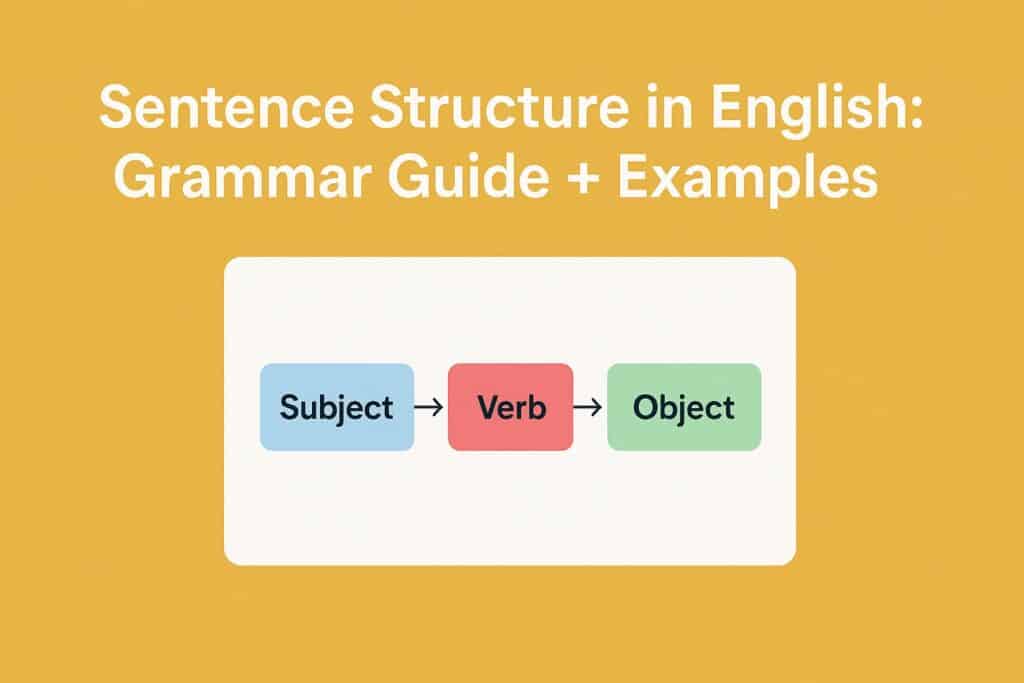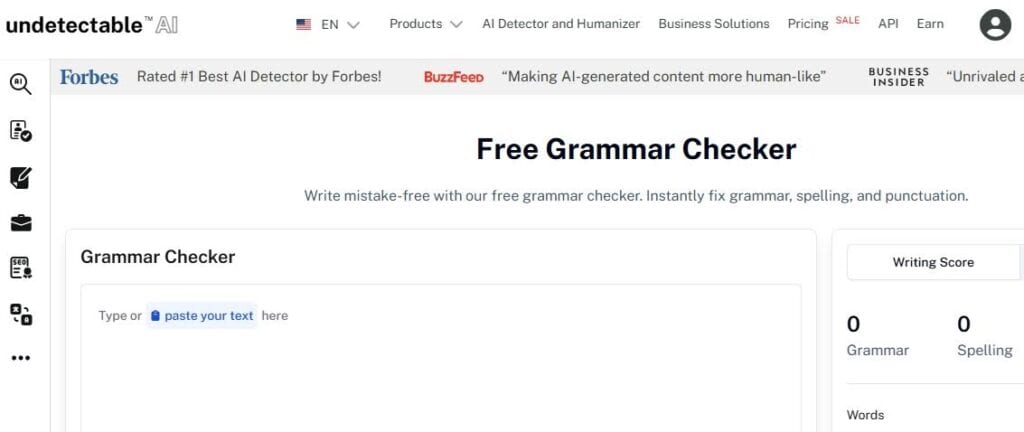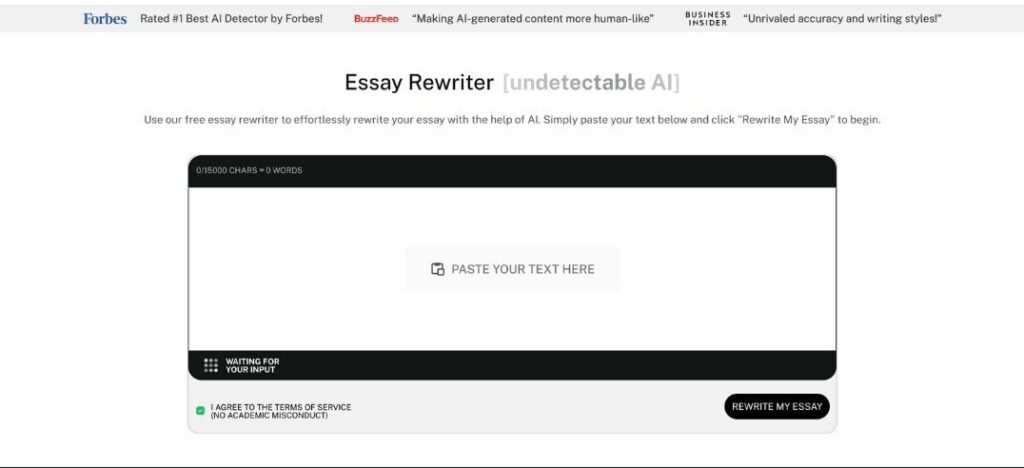After you’ve memorized parts of speech, you need to learn how to string those words together in a way that makes sense.
Without understanding the sentence structure in English, you can have the vocabulary of a professor and still sound like you’re speaking in puzzle pieces.
Today, I’ll walk you through how sentences are built using subjects, predicates, clauses, punctuation, and the many types of structure they take.
Let’s get right into it.
Key Takeaways
- A complete sentence must have a subject and a predicate. Objects may also be added when an action needs a receiver.
- The four types of sentence structures are simple, compound, complex, and compound-complex sentences.
- Writing style improves when you deliberately vary sentence length and balance quick hits with layered, explanatory sentences.
- Mastering sentence structure takes consistent practice. Rewrite your sentences in multiple ways, analyze writing you admire, and read drafts aloud to catch rhythm issues.
Basic Elements of Sentence Structure

Every sentence you read or write has an internal structure. But exactly what is a sentence structure made of?
Here are the fundamental building blocks that every well-formed sentence relies on.
Subject, Predicate, and Object
At the heart of every sentence is a subject and a predicate. The subject names the “who” or “what,” while the predicate tells us what that subject does.


Never Worry About AI Detecting Your Texts Again. Undetectable AI Can Help You:
- Make your AI assisted writing appear human-like.
- Bypass all major AI detection tools with just one click.
- Use AI safely and confidently in school and work.
Without both, you do not have a sentence, you have a dangling thought.
Take this example: The teacher explained the lesson.
- Subject: The teacher
- Predicate: explained the lesson
- Object: the lesson
Drop the subject, and you’re left wondering who did the explaining.
Remove the predicate, and you only know there is a teacher, but nothing else.
The object steps in only when an action needs something or someone to receive it.
Clauses and Phrases: Definitions and Roles
Clauses and phrases add depth to your sentence. A clause has both a subject and a predicate, which makes it capable of expressing a full or partial thought.
There are two types of clauses, dependent and independent.
- An independent clause is complete on its own, e.g., she laughed
- A dependent clause, however, needs another clause to make sense, e.g., because the joke was hilarious
When you combine both clauses, you form a complete, descriptive sentence, e.g., She laughed because the joke was hilarious.
A phrase, on the other hand, is never strong enough to stand as a complete sentence on its own.
It is always used as a part of a sentence to describe location (under the table), action (singing loudly), or add context (with a smile). But it lacks either a subject or a predicate.
Simple vs. Compound Parts
Sentence elements can be simple or compound.
A simple subject is one person, place, or thing. For example, Michelle sings. But, a compound subject joins two or more people doing an action with a conjunction, i.e., Michelle and Alex sing.
The same distinction applies to predicates too. A simple predicate contains one verb or verb phrase, like, they ran.
But a compound predicate contains more than one action, as in, they ran and jumped.
At the sentence level, you can also combine two independent clauses to form a compound sentence, such as, Michelle sings, and Alex plays guitar.
It is fairly easy to identify these sentence parts in your own writing using Undetectable AI’s Ask AI. You can paste in any sentence and ask it to highlight the subject, predicate, objects, clauses, and phrases.
Ask AI is super efficient to check your understanding and perfect for school projects where you need to show how sentences are structured.
The Four Main Types of Sentence Structures
Now that you know the essential parts of a sentence, let’s talk about how you can arrange those parts to form different types of sentences.
Essentially, there are four different types of sentence structures.
Simple Sentences
A simple sentence has a single independent clause. It contains a subject and a predicate, which together express one complete thought.
Example: The sun set behind the hills.
Simple sentences are the foundation of writing. They make your writing direct so you’ll see them appear in headlines and also in everyday directions, such as, close the door, I agree, time’s up, etc.
Compound Sentences
A compound sentence joins two or more independent clauses with a coordinating conjunction like and, but, or, so, or a semicolon.
Example: The sun set behind the hills, and the city lights flickered on.
You use these compound sentences for linking related ideas without sounding repetitive. They also help you vary your sentence length to avoid a monotonous tone.
Complex Sentences
Complex sentences pair an independent clause with at least one dependent clause. The dependent clause adds extra information but cannot stand alone.
Example: The city lights flickered on as the sun set behind the hills.
Writers use complex sentences to explain timing, cause and effect, conditions, or contrasts.
Such sentences show relationships between ideas instead of simply listing them, which is very useful in essays and storytelling.
Compound-Complex Sentences
As the name suggests, this structure blends the previous two. A compound-complex sentence contains at least two independent clauses and one or more dependent clauses.
Example: The sun set behind the hills, and the city lights flickered on while people hurried through the streets.
Look at how much info this sentence conveys in one go. It can be used to express multiple actions, connect them logically, and add background details.
The downside of this structure is that you easily misplace commas if you’re not too experienced with them.
Also, you could string too many clauses together, which causes your sentence to become a confusing wall of text.
Longer sentences, especially compound and complex ones, are prone to mistakes.

Undetectable AI Grammar Checker is incredibly useful at identifying missing punctuation, sentence fragments, or run-on sentences in such sentences.
Punctuation in Sentence Structure

You can write a perfectly good sentence with strong subjects and predicates, but if your punctuation is incorrect, it will read like a badly delivered joke.
Used well, punctuation tells the reader exactly when to pause, when to stop, and how one idea connects to the next.
A period ends a statement, simple as that.
If your sentence feels like it’s stretching on forever, you probably need a period to break it up into two.
Commas are the breathing spaces of language.
They separate items in a list (I bought apples, oranges, and bananas), set off extra information (My brother, who lives in Chicago, is visiting), and come before conjunctions when you join two sentences (I wanted coffee, but the café was closed).
A semicolon links two closely related sentences without needing a conjunction. For example, I have a meeting tomorrow; it’s going to be a long day.
A colon, however, introduces something that expands on what came before it, as in, she packed everything: clothes, books, and her guitar.
Question marks and exclamation points control your tone. Questions obviously need a question mark, while exclamation points show excitement or urgency.
Finally, dashes and parentheses let you slip in side notes and add emphasis. For example, I cooked dinner today (and surprisingly, it was good).
The bottom line is that punctuation shapes meaning.
If you want to double-check your punctuation usage, Undetectable AI Grammar Checker can spot all your mistakes before you submit anything important.
Sentence Structure and Writing Style
If every sentence you write is the same length and follows the same “subject + verb + object” pattern, your work starts to sound very monotonous.
Readers notice rhythm as much as they notice meaning.
Too many short sentences in a row sound abrupt, like you’re tapping out texts. Stack only long, winding sentences, and it feels like you’re holding them hostage until they reach the period.
A good writing style uses a good mix of both. Follow a short, punchy sentence with a compound or complex one that stretches out and explains more.
Drop in a simple sentence to make an important point hit harder. Use a compound-complex structure when you want to show multiple actions happening at once.

Restructuring paragraphs for style takes practice, but AI Essay Rewriter will help you learn it faster.
Paste in a flat section of text, and it will suggest ways to rearrange sentences, combine or split ideas, and add variation without changing your message.
Common Errors and How to Fix Them
Even when you understand sentence structure well, certain mistakes creep in again and again.
Here are some mistakes that students usually make when dealing with different sentence structures:
- Run-on sentences: This happens when you jam multiple ideas together without proper punctuation or connectors. Fix it by adding a period or a conjunction.
- Sentence fragments: A fragment is an incomplete sentence that lacks all components, i.e., a subject, a predicate, or a complete thought.
- Parallelism errors: Lists or connected phrases in a sentence need the same structure. For example, the sentence “he likes swimming, biking, and to run” is jarring. Your structure should be consistent, like, ‘he likes swimming, biking, and running.’
- Overly formal tone: Writing that’s grammatically correct but sounds like a legal document will bore readers. Unless you’re in a courtroom, avoid writing sentences like ‘It is imperative that we commence proceedings forthwith,’ when a simple sentence, ‘We need to get started right away,’ gets the job done.
Practice: Improve Your Sentence Structure
Improving sentence structure isn’t something you learn once and master forever. It takes years of deliberate practice.
The easiest way to get better is to start noticing how sentences work in everything you read.
Take a paragraph from your favorite book or article and break it apart. Identify the subjects, predicates, clauses, and punctuation choices.
Then try rewriting a plain, flat sentence in three different ways, once as a compound sentence, once as a complex sentence, and once as a compound-complex.
Another way to practice sentence structures is to take a paragraph you’ve already written and deliberately vary the sentence length.
Start with a punchy line, follow it with something longer and explanatory, then bring it back to a crisp, short statement.

If you want live feedback while you practice, you can’t find a better tool than AI Chat.
Paste in a sentence or paragraph, and ask for guidance on how to restructure it, and you’ll slowly notice yourself doing it on your own.
Get instant feedback and improve your writing—try the tools in the widget below.
Final Thoughts
Sentence structure forms the foundation of clear, engaging writing.
Of course, understanding everything we talked about today doesn’t mean you’ll never stumble.
Until you get the perfect hang of the different types of sentences and form your own style, use Undetectable AI to apply your learning to real writing:
- Ask AI to break down and label subjects, predicates, objects, clauses, and phrases in your sentences
- AI grammar checker to catch sentence fragments, run-ons, and missing punctuation
- AI essay rewriter to restructure repetitive paragraphs by adding sentence variety
- AI humanizer to revise mechanical writing and make it sound natural
- AI chat to get guided, real-time feedback on rewriting sentences and improving structure
For sentence mastery, try Undetectable AI’s Ask AI, Grammar Checker, and AI Essay Rewriter—your go-to tools for improving clarity and style.
Try Undetectable AI today and see the difference for yourself.
